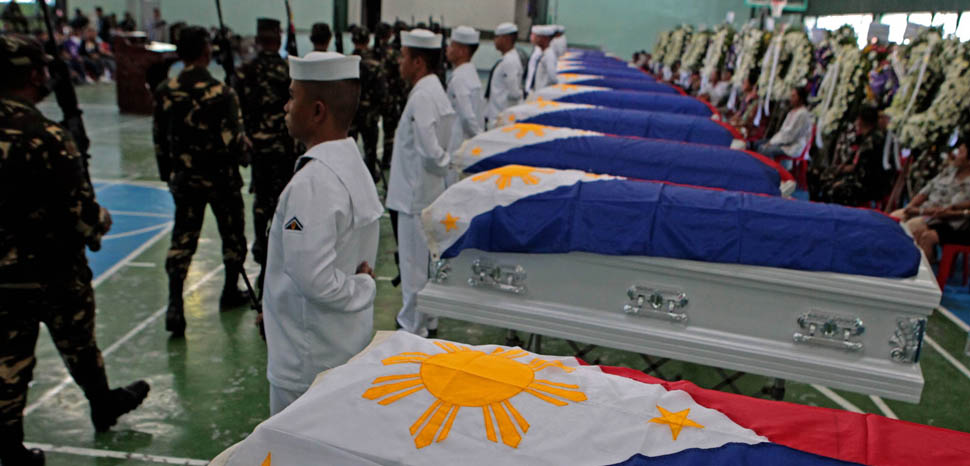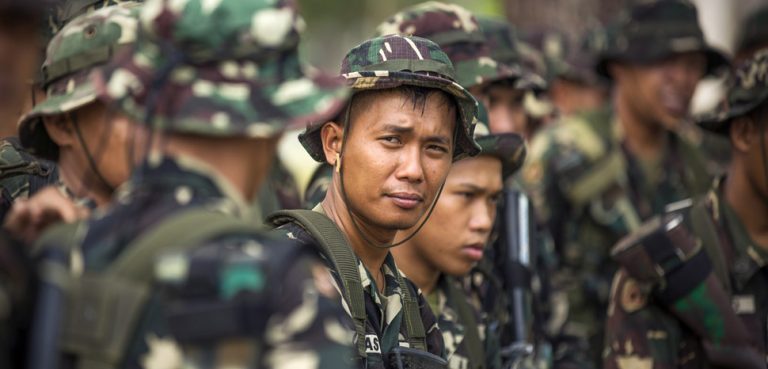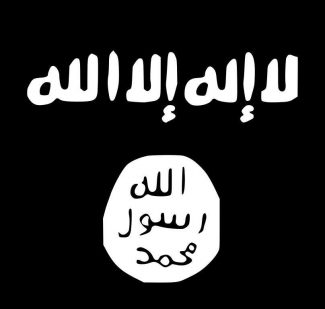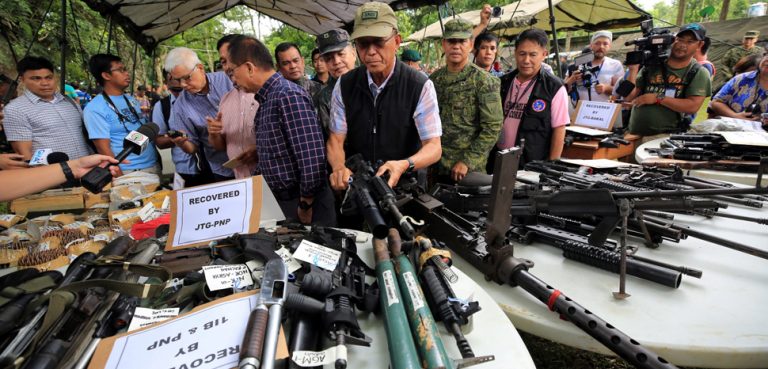Shortly before midday on 24 August, a bomb ripped through two military trucks parked outside a shopping area in Jolo, the capital of the southern Philippines’ island province of Sulu. As security officials responded to the blast, a suicide bomber detonated her device having been prevented from entering the cordoned-off area. The first explosion, initially reported to have been caused by an IED strapped to a motorbike, was later confirmed as another suicide bombing. The double blasts left 14 people dead and at least 75 injured.
The Philippine armed forces quickly blamed Abu Sayyaf, an Islamist militant group aligned with the Islamic State, which has been responsible for at least five suicide attacks involving eight bombers since July 2018. Three years ago, Abu Sayyaf had been dealt a major blow when its leader, Isnilon Hapilon, was killed after laying siege to the city of Marawi with fighters from another extremist group, the Mautes, for five months. It was hoped the militants’ defeat in Marawi might turn the tide on years of rising jihadism in the region.
Yet since then, despite a peace deal signed by Manila and moderate Moro Muslim rebels, intensified army operations targeting local Islamic State affiliates, and sustained counter-terrorism support from the United States, the threat from Abu Sayyaf is alive and evolving rapidly. However, headline-grabbing tactics aside, its six-year-old pledge of allegiance to the Islamic State now matters little. As in most of its 30-year history, Abu Sayyaf’s violence is best explained by local dynamics, family ties and its ability to attract new recruits.
US-supported military offensives
In spite of recent Abu Sayyaf attacks, the Armed Forces of the Philippines (AFP) claims it has made a degree of progress in stemming the tide of militancy. Martial law in Mindanao, imposed after the outbreak of the Marawi siege in mid-2017, was lifted on 31 December last year, while the army has persisted with regular patrols, ground offensives and aerial attacks on militant hideouts throughout 2020. In October, the AFP’s public affairs chief Capt. Jonathan Zata said 55 Abu Sayyaf members were killed from January-September, while another 78 surrendered. He revealed that 97 firearms, seven IEDs, and nine camps were also seized.
Inroads were also made against other Islamist groups. The Mautes lost 24 fighters in clashes with the AFP, while 15 surrendered and five were arrested. The Bangsamoro Islamic Freedom Fighters lost 28 men over the same period, while 134 surrendered and 20 were detained. Abu Sayyaf suffered its biggest loss in mid-August, when notorious sub-leader Idang Susukan was arrested by police officers in Davao city, where he had reportedly travelled to seek medical attention for injuries to his left arm sustained in an earlier battle. Susukan was involved in lucrative kidnapping-for-ransom activities, making his arrest a significant setback.
Yet these markers of progress are tempered by the overall picture. In August, a US Department of Defense update on Operation Pacific Eagle-Philippines (OPE-P), its counter-terrorism campaign in the country, said that “efforts to reduce extremism in the Philippines do not appear to have made a substantial difference.” Estimates from OPE-P indicate that since 2017, Islamic State-aligned groups in the region have maintained a fighting force of 300–500, remaining “about the same size and strength for the last few years.” This grim assessment comes despite annual US funding of $100m for intelligence, surveillance, and reconnaissance activities. The report cited “COVID-19 restrictions” and “force rotations” as having an additional negative impact on assistance in 2020, along with relatively unchanged “economic, social and political conditions.”
Abu Sayyaf suicide bombing spree
A prevalent feature of post-Marawi militancy has been suicide bombings – a phenomenon unseen before in the Philippines. Five separate attacks have taken place in the island provinces of Basilan and Sulu, where Abu Sayyaf operate, and were carried-out by radicalized Egyptian, Indonesian, and Moroccan nationals, as well as at least one Filipino. The deadliest incident targeted the Our Lady of Mount Carmel cathedral, just across the street from the latest attack in Jolo, in January 2019, leaving 22 people dead and 81 wounded.
Abu Sayyaf have also persisted with lower-level criminal-type activities, kidnapping Indonesian fishermen for ransom off the coast of Malaysia’s Sabah state, ten minutes by boat from militant bases on Tawi-Tawi island. At least 39 Indonesian seafarers have been abducted by the group since 2016, when foreign sailors started to avoid the area after several Westerners were beheaded by Abu Sayyaf in absence of a ransom. An Indonesian captive, among five seized from a ship in January, also died last month amid a shootout in Sulu.
Such activities, of both a criminal and terrorist nature, have rebounded under Abu Sayyaf’s current leader, Hatib Hajan Sawadjaan, who commands a faction in the mountains around Patikul, on Sulu’s north coast. Reported to have narrowly avoided death at the hands of the military on several occasions, his leadership has been characterized by a mix of maritime banditry and headline-grabbing suicide attacks part-inspired by the Islamic State and its radical ideology. The tactic is more of a side effect than representing firm links.
Family connections and new recruits
For decades, blood ties and close family relationships within Abu Sayyaf have made the group particularly resistant to infiltration. In its current incarnation, the Ajang-Ajang faction led by Hatib also contains many of his relatives, notably his nephew Mundi Sawadjaan, who is a bomb-maker considered likely by the AFP to have constructed the devices detonated by the Jolo bombers. Abu Sayyaf is insular, splintered and non-hierarchical below its senior leadership, making connections difficult to track. Its members and supporters are loyal in part due to benefiting from the economic rewards of hostage-taking and the illegal drug trade. Hideouts on outlying islands and in Jolo’s densely-forested interior are often out of the authorities’ reach.
Suicide pacts among families have become a defining feature of Abu Sayyaf’s latest spate of terror attacks. The January 2019 cathedral attack was perpetrated by a married Indonesian husband and wife, while the two female suspects behind the latest outrage were found to be the widows of two deceased Abu Sayyaf fighters. Philippine Army chief Lieut.-Gen. Cirilito Sobejana identified one as the wife of Norman Lasuca – the first known Filipino suicide bomber – and the second as widow of Abu Sayyaf sub-leader Talha Jumsah. In a raid on 10 October, another Indonesian woman, Rezky Fantasya Rullie, was arrested in Sulu alongside two other women on suspicion of plotting a suicide attack. All three were married to Abu Sayyaf fighters. AFP soldiers reportedly seized IED components and a vest rigged with pipe bombs from their residence.
Although several of the bombers came from abroad, local recruitment enables Abu Sayyaf to replenish its ranks after battlefield losses. Estimates of its strength have remained consistent for years, supporting the narrative that a sizeable recruitment pool exists in Sulu, where young men have limited alternative options to make a living. Sulu, among the most impoverished areas of the Philippines, has a long history of conflict and was the only province to reject a peace deal between the government and moderate Moro insurgents in a referendum last year. Awash with firearms, Abu Sayyaf has drawn on local support in Sulu to fight for independence since 1990, in a region that sat at the heart of an Islamic sultanate prior to the colonial era. Many still wish for the revival of self-governance in the future, and accept militancy as a means to an end. The Islamic State, through social media, has only ever latched onto what has always been a local struggle.
Maute allies in Lanao del Sur
Remnants of Abu Sayyaf’s co-conspirators in Marawi, the Maute Group, remain functional across the Sulu Sea in Lanao del Sur province, on Mindanao’s largest island. Although its resources are stretched thin, the AFP last month identified Faharudin Hadji Satar, also known as Abu Bakar, as the new leader of the Maute Group. Its recruitment drive is reported to be ongoing in the Lanao municipalities of Balindong, Madalum and Piagapo, where displaced residents of Marawi city have received text messages enticing them to join.
The more moderate Moro Islamic Liberation Front, signatory of a peace agreement with Manila and highly influential in Lanao, has pledged to work with the AFP to combat extremism and persuade the Mautes to disarm. It is hoped that the new Bangsamoro Autonomous Region in Muslim Mindanao, which the Moro Islamic Liberation Front leads, will eventually bring prosperity and displace the decades-old narrative that oppressed Muslims in the south can only find hope and livelihood opportunities by joining armed groups.
The Bangsamoro region, supported by most Moro Muslims, offers a chance for renewal, but the activities of Abu Sayyaf demonstrate how hard it is to get all factions on side. Abu Sayyaf retains a firm stranglehold in Sulu, as the Mautes look to entice decommissioned moderate rebels and capitalize on Moro frustrations over the slow rebuilding of Marawi, where 120,000 residents are still displaced three years after the siege ended. Abu Sayyaf and the Mautes failed in that past mission, but remain a thorn in the side of Mindanao.




